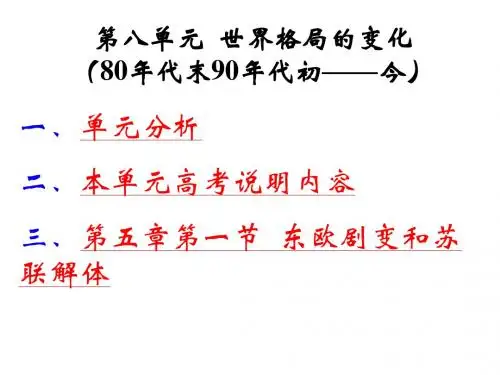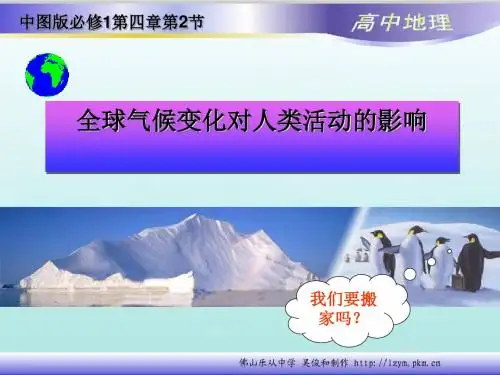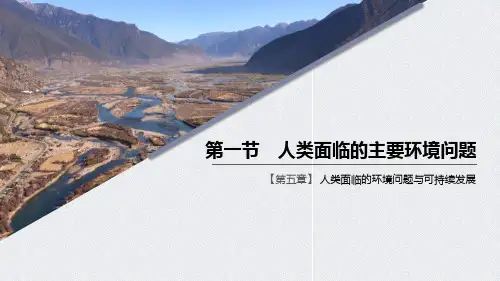(三) 年际至百年尺度
全球变化 • 这一时间尺度的事件发生在年际、年代际到世纪际 • 主要驱动因子包括太阳活动、火山活动、大气环流的长期变化、厄尔 尼诺—南方涛动等自然因子和大气温室效应的增强等人为因子。 • • • • • 太阳活动具有大致11 a和80 a的周期 火山尘埃指数的变化具有大致70 a的周期 赤道平流层纬向风具有准2a的振荡 厄尔尼诺—南方涛动具有3a一7a的短周期和大约70 a的长周期 近百年来地球大气中温室气体CO2含量的变化则呈现持续上升趋势。
板块运动、海陆变迁、山脉形成、大洋扩张、大气圈形成、生命起源与进化
(二)千年至万年尺度
全球变化
• 发生在地质年代表最新的一个地质时期 发生在地质年代表最新的一个地质时期——第四纪和人类历史时 第四纪和人类历史时 期内,主要受到地球轨道参数如偏心率、黄赤交角和岁差等变化 期内 的影响。 • 具有准周期性变化的特点,属于可逆过程中的事件。 • 典型事件包括第四纪冰期一间冰期的交替,冷暖、干湿变化 • 冰盖变化导致海面的大幅度升降 • 大气成分变化,尘埃含量变化;干旱区古土壤层的发育;生物种 的分布、迁移和灭绝 • 人类文明的诞生与发展:如北京猿人出现于(0.5 Ma),马坝人 (0.13Ma)、丁村文化(0.12Ma),仰韶文化(7 ka)
But those cosmic rays can't reach Earth when the sun is stormy with sunspots and the solar wind is roaring. So a tree ring containing low carbon-14 is a sign of few cosmic rays in that growth year, which is an indicator of a stormy sun, contend Max-Planck-Institut für Sonnensystemforschung's Sami Solanki and colleagues. Most striking in the new sunspot archive derived from the new method is how much today's ongoing stormy period stands out from past periods, the researchers said. "During the last eight millennia, the episode with the highest average sunspot number is the ongoing one that started about 60 years ago," reported Solanki. And although 11,400 years is merely a moment in the multi-billion-year life of the sun, it is enough to contain a record of 31 high sunspot periods which average about 30 years in length, the researchers said. The longest is 90 years long. That is enough of a sample to enable the researchers to venture a guess about how long the current stormy period will last. "The probability that it will continue until the end of the twenty-first century is below one percent," the researchers conclude. As for whether the last few decades of storminess on the sun is the cause of global warming over the same period, it's not likely, said Reimer. "The increased solar activity may account for part of the climate trend and it does come at a bad time," she said. "However, in terms of actual warming it probably isn't a large contributor."










